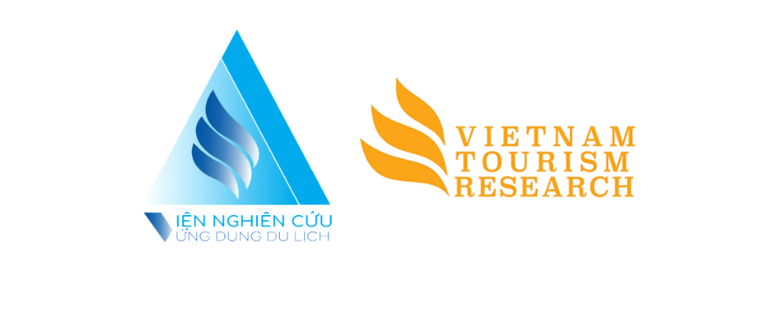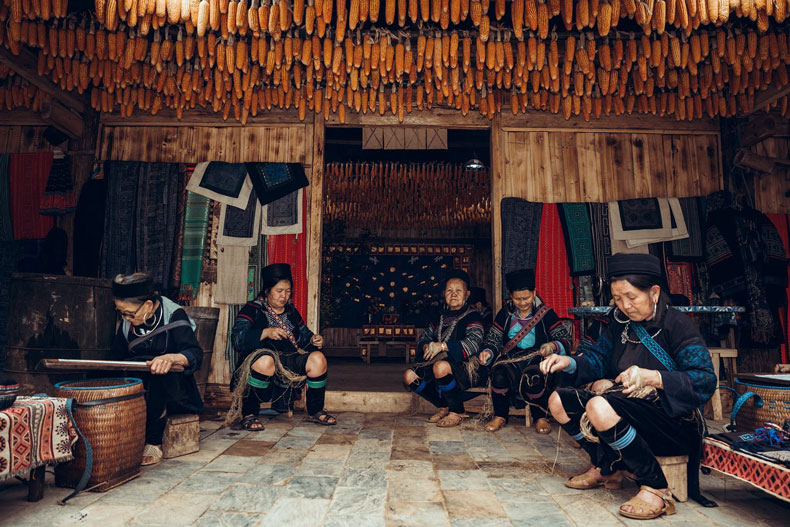This post is also available in:
Tiếng Việt (Vietnamese)
Amid the deep valleys of the Phach region in Son La Province, Ban Phat emerges as a “cultural oasis” of the Hmong people. Here, Mr. Vang—a local resident without formal training or significant capital—has gradually built a community-based tourism model grounded in self-reliance, indigenous knowledge, and a deep-rooted love for his homeland.
This article analyzes Mr. Vang’s story as a case study exemplifying sustainable community-based tourism in the context of ethnic minority regions.
Ban Phat – The Origins of Place and Cultural Essence
Tucked within a mountainous valley of the Phach region (Van Ho District, Son La Province), Ban Phat is said to be the earliest settlement in the area. Local oral history recalls an elderly Hmong woman as the first to settle and cultivate this remote land. The village has preserved its traditional Hmong architecture and lifestyle: airy stilt houses, plum and apricot orchards, and a single narrow road—less than two meters wide—meandering through slopes and flat paths leading into the hamlet.
On clear days, one can see Mount A Pha Luong from the nearby Dinh Phach summit—a majestic natural icon that draws visitors for its awe-inspiring views and photo opportunities. Together with neighboring villages like Phach Mot, Phach Hai, and Dinh Phach, Ban Phat is becoming a promising but still emerging ecotourism and cultural cluster.
Mr. Vang – From Local Resident to “Indigenous Expert”
Born and raised in Ban Phat, Mr. Vang is not merely a villager but a steward of local memory and culture. About four to five years ago, he embarked on a tourism journey with virtually no foundation: no startup capital, no formal training, and no initial family support. Yet with perseverance, he has gradually developed a modest but well-structured tourism micro-ecosystem.
Starting with just one small stilt house to accommodate a few guests, Mr. Vang’s homestay can now host up to 24 visitors, utilizing two stilt houses with adaptable upper and lower spaces. The interiors are adorned with Hmong cultural artifacts such as panpipes, brocade, and ceremonial drums—modest yet distinctly authentic. He raises chickens and pigs in his backyard to serve guests, sources mountain produce himself, and personally cooks traditional meals for visitors.
Cultural Immersion and Personalized Experiences
Visitors to Ban Phat enjoy not only accommodation but immersive cultural activities: village walks, plum picking in Mr. Vang’s orchard, Hmong storytelling, traditional dances, and panpipe performances. After dinner, Mr. Vang often invites villagers to join evening cultural gatherings, fostering a warm and genuine communal atmosphere. Some culturally curious guests even request to learn the Hmong language directly from locals.
Uniquely, the challenging journey to the village—via rocky paths, dirt roads, and long concrete slopes—has become an integral part of the experience. Many visitors relish the ride in specialized trucks, help push vehicles, or stop for photos among blooming wild sunflowers, plum blossoms, and mustard fields. The interactions between tourists and the community are spontaneous, uncontrived, and deeply human.
Present Challenges – A Portrait of Grassroots Tourism Realities
Despite the achievements, Ban Phat’s community tourism faces significant challenges common to remote and marginalized areas:
-
Poor transportation infrastructure: Many road sections are slippery and rough, especially during the rainy season. Low-clearance vehicles cannot reach the village.
-
Limited communication access: Until recently, Mr. Vang had to climb a plum tree to find a 4G signal and send booking messages. Wi-Fi has only become available in the past six months.
-
Lack of training and initial capital: Mr. Vang has never attended any formal tourism workshops. All investments were self-funded, creating financial pressure.
-
Unstable income: Despite juggling multiple tasks, his income from tourism remains modest—only a few million VND per month—highly dependent on seasonal factors, especially the plum harvest.
-
Limited human resources: Cultural programs require community participation, but not everyone has the skills or willingness to contribute.
Self-Learning and Expanding Knowledge Networks
Not confining himself to Ban Phat, Mr. Vang actively visits and learns from successful homestay models in Moc Chau, Dong Sang, Ban Ang, Ban Hoc Song, and Van Ho—across Kinh, Thai, and other Hmong communities. These learning trips have equipped him with practical knowledge to further refine his approach.
He also engages in local tourism networks, connects with travel groups, tour guides, and authorities in an effort to put Ban Phat on the tourism map and move beyond its status as an unknown destination.
Achievements and Future Aspirations
Despite ongoing difficulties, Mr. Vang’s tourism initiative has yielded tangible results:
-
Official recognition from local authorities, including a certificate of merit in 2020 for contributions to tourism development in Huong Son commune.
-
Improved family livelihood and a renewed appreciation for his homeland.
-
Vibrant preservation of Hmong culture through living practices.
-
Inspiration for local youth and community members to pursue new pathways.
Indigenous Models – A Pathway to Sustainable Mountain Tourism
Mr. Vang’s story is compelling evidence that community-based tourism, when led by knowledgeable, passionate local actors, can develop sustainably without disrupting traditional socio-cultural structures. It is not merely a story of economic development, but a journey of cultural revitalization amid the currents of modernization.Câu chuyện của anh Vàng tại bản Phát là minh chứng thuyết phục cho luận điểm: Du lịch cộng đồng, nếu được dẫn dắt bởi người bản địa có tri thức, có lòng yêu quê hương và có khát vọng, hoàn toàn có thể phát triển bền vững mà không phá vỡ cấu trúc văn hóa – xã hội truyền thống. Đó không chỉ là câu chuyện phát triển kinh tế, mà còn là hành trình gìn giữ và làm sống lại những giá trị bản địa giữa dòng chảy hiện đại hóa.









